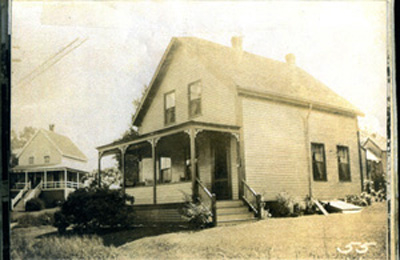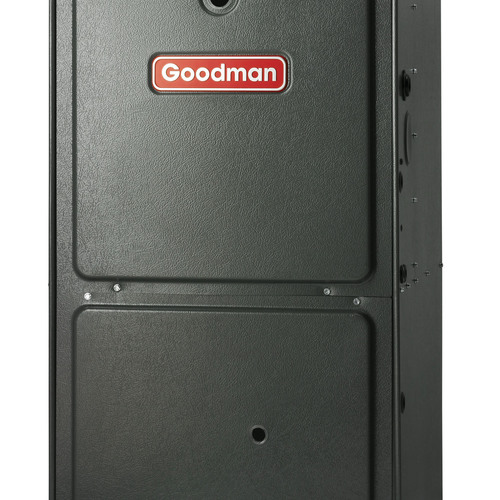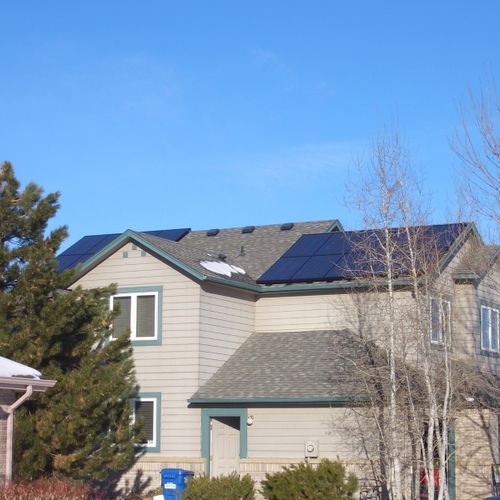Image Credit: City of Portland, Maine
Image Credit: City of Portland, Maine The same Island Avenue home: attractive but burdened with decades of over-improvements.
Image Credit: Chris Roberts A couple of blocks away, a nearly identical home in 1900.
Image Credit: City of Portland, Maine The same Pleasant Avenue home has barely changed in over a century.
Image Credit: Chris Roberts
Home unimprovement, noun. During renovation, the removal from a building of misguided features or home “improvements” added during previous renovations.
It’s always satisfying to see a name given to a phenomenon that you already know well, and that is just what happened for me recently with “home unimprovement.” Yes, the prefix is intentional: home improvement can result in things that aren’t “improvements” at all, and the only logical thing to do is to “unimprove” them.
A renovator’s job is to unimprove
I picked up the unimprovement concept from my uncle Chris Roberts, the most handy guy I know and a lifelong builder. Chris has renovated or helped renovate quite a few houses in his life, but his method of working might be considered unconventional. “As a renovator one of the things I do on houses is unimprove them,” he told me recently. “I come in and say ‘I need to get rid of that — it’s been over-improved!’”
Chris has always been a good renovator because he sees things how they could be, not how they are, but always in a way that is sensitive to how they are. I have seen him squeeze a new bathroom into an upstairs in such a way that you would swear that the bathroom and the surrounding rooms had always been that way. I have also seen him boldly recommend tearing down a wall or addition that wasn’t a good idea to keep. (Why he seems to deliver that advice to me regularly, starting me on major overhauls of houses, I’m not sure.) Sometimes being sensitive to how things are means sensing that things are all wrong.
Two identical homes, two different stories
Two houses he renovated over the last few years on Peaks Island, Maine provide good examples. Both homes date from late 1800s, probably built by the same builders using the same book of plans.
One of these houses had barely changed since it was built. It probably hadn’t even had a fresh coat of paint, inside or out, although the owners apparently managed to keep a good roof on it, since it remained square and true. The one “improvement” made in its lifetime was the addition of a downstairs bathroom to replace the original outhouse.
You’ve done a good job if no one notices you’ve done it
That, of course, was the one piece that Chris needed to unimprove. It was taking up space (and nice light) better used by the kitchen and dining room, and putting a bathroom upstairs with the bedrooms, which Chris did, was now a better idea. He did quite a bit of work to make up for those years of no repainting, and he updated things like insulation and wiring, but the renovated house feels remarkably sensitive to its history.
As Chris says, “You’ve done a really good job if when you’re done nobody knows you’ve done it.”
This seems like common sense to me, but I have also observed that a lot of builders and homeowners want people to notice what they’ve done. It’s about their needs, not the house’s needs.
The other Peaks Island house had a series of “improvements” visited on it virtually since it was built. It was moved back on its foundation to accommodate an enclosed front porch. It got a new dormer off the northeast end for added space upstairs, a wing and new entrance on the southwest end, and more additions off the back.
“Unimproving” this house meant not tearing off these spaces, which add enough space for a larger family, but among other things, framing a new roof over the additions on the back of the house in order to bring some visual unity, and simply to help the water shed properly. The renovated house is really nice, but it still shoulders some burden from its years of being over-improved.
Energy-related unimprovements
Questionable home improvements are often energy-related. Replacing nice, old repairable windows with cheap, uglier sash replacements is a classic. Another is adding insulation into an attic or crawlspace without first air sealing around penetrations like pipe chases and light fixtures. A third example might be redoing the siding on a house without also improving the insulation. All three of these create missed energy opportunities, and create a lot of work to unimprove in the future, if doing so is even possible.
At a larger scale, a great example of home unimprovement is the Brattleboro Food Coop here in Vermont. Sometime earlier in the 20th century, the lot was filled with a brick street-front building matching the other street-front buildings on Main Street. Then someone had the bright idea of doing a low, boxy retail store in the back of the lot with room for parking in front. If that sounds familiar, it has happened in towns and cities across the U.S.
Back to the old
After a few decades, the Coop and its shareholders, now owners of the plaza, found that this “improvement” didn’t improve things at all in terms of overall quality of life and quality of the urban fabric, and it wasn’t working that well as a store. So we’re going back to a multi-story, mixed-residential-and-commercial building going in at the street front, with the low-rise store in back slated for tear-down when the work is done. It’s far from being a carbon copy of what was there, but I bet that once it’s in place, a lot of people will have the feeling that it was there all along, or should have been.
Another thing Chris said to me is that “prosperity ruins houses.” Wealth allows people to buy higher-quality materials, workers with better skills, and to keep things repaired as needed. But it seems that in the area of home improvement, people also make extravagantly bad decisions when they have money to burn.
What are your observations of home and energy unimprovement? Comment below.
Tristan Roberts is Editorial Director at BuildingGreen, Inc., in Brattleboro, Vermont, which publishes information on green building solutions.
Weekly Newsletter
Get building science and energy efficiency advice, plus special offers, in your inbox.
















0 Comments
Log in or create an account to post a comment.
Sign up Log in